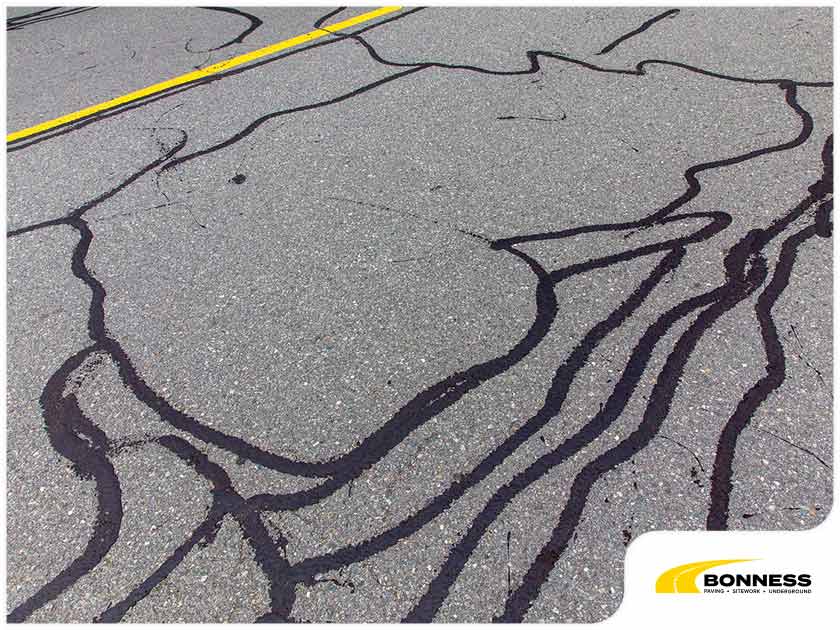
Asphalt cracking is a pavement condition that often leads to potholes and road inconsistencies. In addition, it can lead to a significant reduction in the useful life of asphalt pavement, which can possibly increase your property’s maintenance costs. This short post will cover the causes, types and fixes using various asphalt paving methods.
What Are the Causes of Asphalt Cracking?
Here are the primary causes of cracks, blisters and other damages on your pavements.
Ultraviolet (UV) Rays
UV rays damage asphalt pavements by breaking down the molecules that make up the asphalt. This process is known as photo-oxidation. Consistent solar exposure over time can result in more and more deterioration of asphalt. Penetrating moisture with salt from the air, rain or snow can be causes of blisters, too.
Cold Temperatures
Pavements in cold temperatures can experience cold-patching. This condition occurs when a pavement’s temperature drops below 40 degrees Fahrenheit, warms up during the day and cools again at night. When it cools, it contracts, causing cracks that moisture can easily permeate and cause extensive damage.
Motor Oils
Spilled motor oil from vehicles reduce an asphalt pavement’s elasticity and strength. In addition, it speeds up bituminous material degradation and reduces its durability. The asphalt surface profile and surface hardness may likely affect driving surfaces with increased motor oil spills and cause possible accidents.
Traffic Pressure
Asphalt pavements are subject to traffic pressure and resultant shearing forces, causing wear in asphalt pavements, cracks and potholes. Traffic pressure also heats asphalt pavements during the day, causing more asphalt to flow out of the pavement joints, which results in cumulative damage.
Types of Asphalt Cracking
Here are three examples of asphalt cracking and how to fix them.
- Edge: A crack in an asphalt pavement surface is called an edge crack. These are caused by the difference in temperature between the pavement and the ground underneath it. Asphalt emulsion filling usually solves these.
- Slippage: Slippage asphalt cracks are a common issue in asphalt pavements. This can happen from the weight of cars, trucks and machinery on the asphalt over time. It can also occur from shifts in the ground that cause the asphalt to lose its hold. Slippage cracks can be fixed by filling them with an asphalt patch or hot mix concrete. This is done by rolling out a 2-inch thick layer of hot mix over the crack and compacting it using a roller.
- Transverse: Transverse cracks are cracks that run perpendicular to the direction of vehicle traffic. These cracks are usually caused by insufficient asphalt mixture compaction or excess moisture in the pavement. Transverse cracks can be repaired with asphalt emulsion and cold patching materials.
If you need excellent pavement and driveway solutions, you can count on Bonness to provide you with the best solutions. Call (239) 597-6221, or fill out our contact form to get a free quote today.
